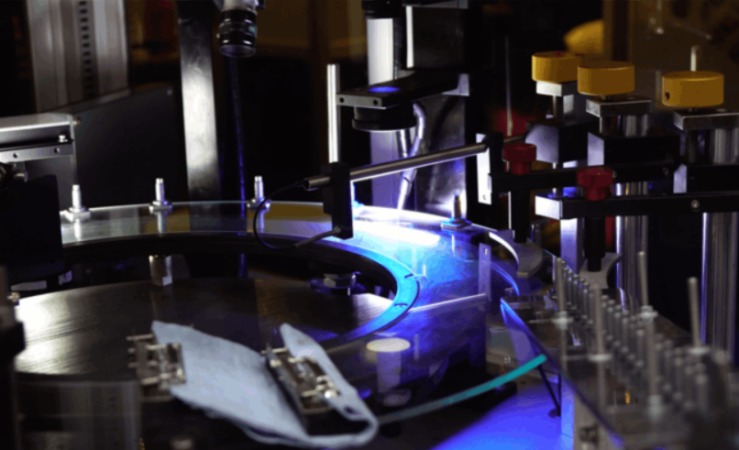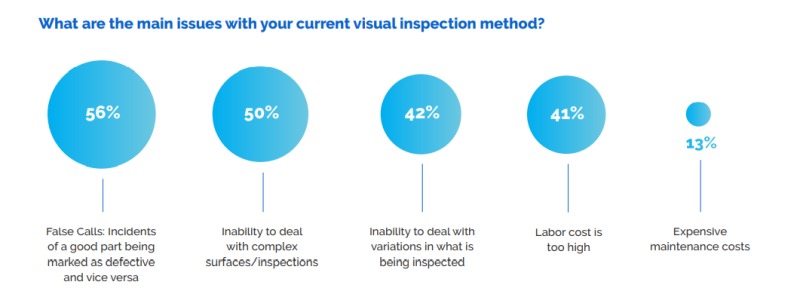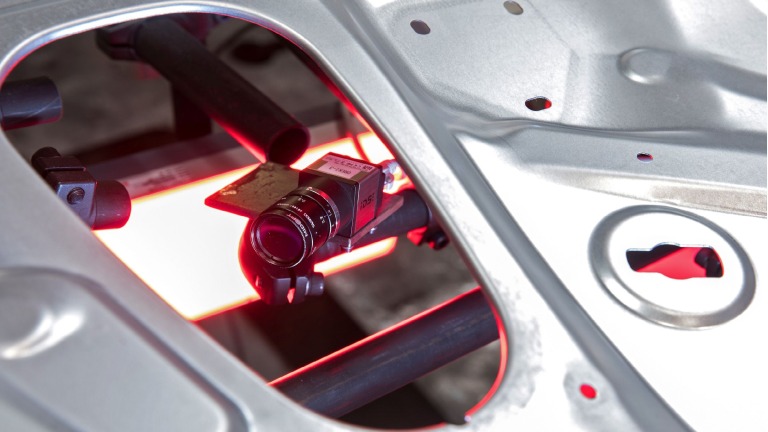Landing AI, an industrial AI company, and the Association for Advancing Automation (A3) have released a report that showcases new findings that relate to the state of AI-based machine vision. The survey covered a range of topics, including the level of adoption, benefits, and challenges of implementing AI-based visual inspection.
Of the many use cases in manufacturing, visual inspection, a task that involves using human eye or machine vision to verify if a product is free of defects or if parts are correctly assembled, is well-suited for AI. According to a study by McKinsey & Company, AI-powered quality inspection can increase productivity by up to 50% and defect detection rates by up to 90% compared to manual inspection.
 Given these benefits, have businesses started using AI in visual inspections? If so, what is the level of adoption, and what are the challenges These questions and more drove Landing AI and A3 to launch a survey on the state of AI-based machine vision. The survey polled 110 companies from the manufacturing and machine vision industry with both multiple and single choice questions. Respondents who took the survey perform a variety of roles and include C-suite executives, automation engineers and plant managers.
Given these benefits, have businesses started using AI in visual inspections? If so, what is the level of adoption, and what are the challenges These questions and more drove Landing AI and A3 to launch a survey on the state of AI-based machine vision. The survey polled 110 companies from the manufacturing and machine vision industry with both multiple and single choice questions. Respondents who took the survey perform a variety of roles and include C-suite executives, automation engineers and plant managers.
One main takeaway is that businesses have high confidence in the effectiveness of AI, and a growing number of companies are already using deep learning-based machine vision for automated visual inspection.

“As evidenced by the survey, AI-based machine vision is already creating value for the manufacturing industry, with proven benefits including improved accuracy, flexibility, and reduced cost,” said Dongyan Wang, Vice President of AI Transformation at Landing AI. “The availability of easy-to-use AI tools specifically designed for visual inspection will drive further industry adoption and bring the benefits of AI to more organizations.”
Companies have a high degree of confidence in the effectiveness of AI, with 55% of respondents saying their overall opinion is either high or very high. The survey showed that 26% of respondents have adopted AI-based machine vision while 41% say they plan to in the future. Of those who are using AI, 62% defined improved accuracy is the top benefit.
While implementing AI, the primary challenge is scarcity of data on which to train AI models, noted 62% of manufacturers. Companies were also concerned about scalability as solutions moved out of pilot programs, with 27% saying they struggled when moving from proof-of-concept to initial deployment.
“With more AI solutions taking hold in manufacturing, vision-inspection solutions have had the most widespread adoption,” said Robert Huschka, Director of Education Strategies, A3. “Automated systems improve quality and quantity measurements due to speed, accuracy, and repeatability and allow human workers more time to focus on higher-value, more strategic work.”
Additional findings from the Landing AI and A3 report include:
- In a heavily automated sector, manual inspection is still playing an important role, with 40% saying their inspection is either completely or mostly manual.
- The confidence level of businesses regarding AI effectiveness is high with 26% saying they are already using AI for visual inspection.
- When it comes to using AI, scarcity of data, complexity of integrating AI within existing infrastructure, and the inability to achieve lab results in production are the top three challenges.
- Most businesses prefer to have ownership of their AI projects either by developing in-house or by working with a vendor.
“Conventional machine-vision technology remains popular in the manufacturing factory, due to its proven repeatability, reliability, and stability. However, the emergence of deep-learning technologies opens the possibility of expanded capabilities and flexibility, leading to more cost efficiency and higher production yield. Deep learning technologies offer so much potential that deep learning based, machine vision techniques in smart manufacturing will see an annual growth rate of 20% between 2017 and 2023, with a revenue that will reach US$34 billion by 2023.” according to ABI research.
Audi is a Pioneer in Using AI-based Vision for Visual Inspection
 The company uses a deep learning-based system that recognizes and marks cracks in sheet metal parts at a plant in Ingolstadt, Germany. The software, according to the company, can detect the finest cracks in sheet metal with the utmost precision and reliably marks the spot. To develop this system, the Audi team spent months training the artificial neural network with several million test images from seven presses at Audi’s Ingolstadt plant and from several Volkswagen plants. Commenting on this remarkable achievement, Frank Loydl, Chief Information Officer at AUDI AG, said “artificial intelligence and machine learning are key technologies for the future at Audi.”
The company uses a deep learning-based system that recognizes and marks cracks in sheet metal parts at a plant in Ingolstadt, Germany. The software, according to the company, can detect the finest cracks in sheet metal with the utmost precision and reliably marks the spot. To develop this system, the Audi team spent months training the artificial neural network with several million test images from seven presses at Audi’s Ingolstadt plant and from several Volkswagen plants. Commenting on this remarkable achievement, Frank Loydl, Chief Information Officer at AUDI AG, said “artificial intelligence and machine learning are key technologies for the future at Audi.”
Solving Visual Inspection Problems Using AI
With Landing AI’s end-to-end visual inspection platform, a global steel manufacturer was able to improve AI model accuracy from 76% to 93% on 38 defect classes in only 2 weeks. This enabled more accurate detection of steel defects. In another case, a leading global compressor manufacturer was able to automate leak detection using an AI-based visual solution co-developed by Landing AI and the company. To identify leaky compressors, cameras were set up in front of glass water tanks where compressors were submerged one at a time. The cameras then captured and sent visuals to a deep learning-based system to detect and analyze the emergence of any air bubble leaks, thereby indicating a leaky or defective compressor.
For more information: www.landing.ai
Tags: 3d vina, hiệu chuẩn, hiệu chuẩn thiết bị, máy đo 2d, máy đo 3d, máy đo cmm, New Report Finds Adoption of AI-Based Machine Vision Growing, sửa máy đo 2d, sửa máy đo 3d, sửa máy đo cmm
